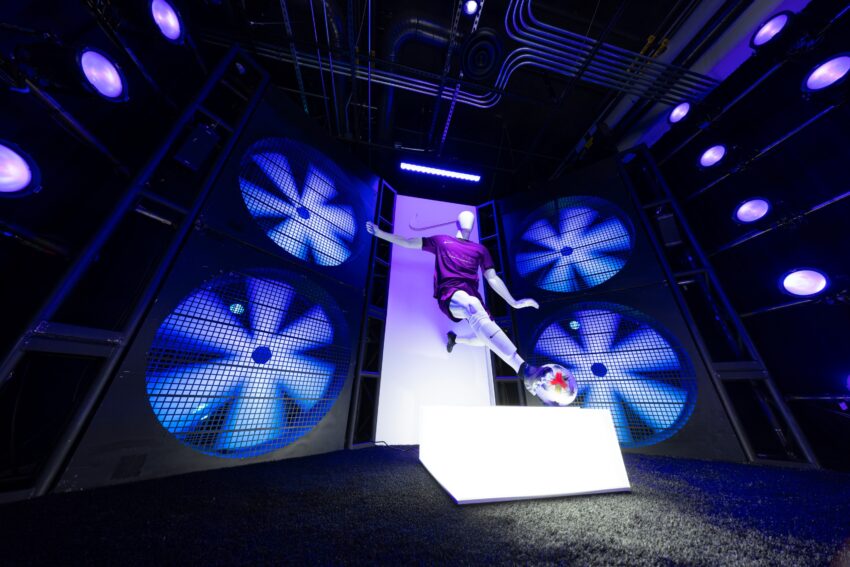
nike designed new gear to keep athletes Nike has unveiled its innovative Aero-FIT performance cooling technology aimed at enhancing athlete comfort in increasingly warm conditions.
nike designed new gear to keep athletes
Introduction to Aero-FIT Technology
Nike’s latest advancement in sportswear, the Aero-FIT performance cooling technology, is designed with an acute awareness of the challenges posed by climate change. This new technology is set to debut in the football kits worn by federations during the 2026 FIFA World Cup, which will take place across Mexico, Canada, and the United States. The introduction of Aero-FIT comes at a crucial time when concerns about heat-related health risks for athletes and spectators are rising.
Enhancing Athletic Performance
The primary goal of Aero-FIT is to improve the efficiency of sweating, a critical bodily function that helps regulate temperature during physical exertion. Nike claims that this new technology facilitates greater airflow between the skin and the fabric of the apparel, allowing for more effective sweat evaporation. Traditional athletic uniforms can often hinder this process, trapping heat and moisture against the body, which can lead to overheating and decreased performance.
According to Nike, Aero-FIT offers more than double the airflow compared to its existing athletic apparel. This significant increase in ventilation is expected to help athletes maintain optimal body temperatures even in extreme heat conditions. The implications of this technology extend beyond mere comfort; they could be crucial in preventing heat exhaustion and other heat-related illnesses during high-stakes competitions.
Climate Change and Sports
The urgency of addressing climate change has never been more apparent, especially in the realm of sports. The upcoming 2026 FIFA World Cup is expected to take place during the summer months, a period when temperatures can soar in many of the host cities. Of the 16 cities selected to host matches, 14 are projected to face extreme heat conditions, raising alarms about the safety of both athletes and fans.
Health Risks Associated with Heat
Heat exhaustion is a serious concern for athletes competing in high temperatures. Symptoms can include heavy sweating, weakness, dizziness, nausea, and even fainting. In severe cases, heat exhaustion can escalate to heat stroke, a life-threatening condition that requires immediate medical attention. As climate change continues to influence weather patterns, the frequency and intensity of heatwaves are expected to increase, making it imperative for sports organizations to adapt.
Nike’s proactive approach with Aero-FIT reflects a growing recognition within the sports industry that climate change poses real risks to athletic performance and safety. By developing apparel that enhances cooling, Nike aims to mitigate these risks and ensure that athletes can perform at their best, regardless of external conditions.
Material Innovation and Sustainability
In addition to enhancing performance, Aero-FIT also addresses sustainability concerns associated with traditional athletic wear. The new material is made entirely from textile waste, which is a significant step towards reducing the environmental impact of synthetic fabrics, typically derived from fossil fuels. This innovative approach not only helps in waste reduction but also aligns with a broader trend in the fashion and sports industries toward sustainable practices.
The Role of Synthetic Fabrics
Synthetic fabrics have long been a staple in athletic apparel due to their durability and moisture-wicking properties. However, the production of these materials often involves significant carbon emissions and reliance on non-renewable resources. By utilizing textile waste, Nike is taking a stand against this environmental issue, contributing to a circular economy where materials are reused rather than discarded.
This shift toward sustainable materials is not just a marketing strategy; it reflects a fundamental change in how companies are beginning to view their role in combating climate change. As consumers become more environmentally conscious, brands that prioritize sustainability are likely to gain a competitive edge in the market.
Stakeholder Reactions
The introduction of Aero-FIT has garnered attention from various stakeholders, including athletes, sports organizations, and environmental advocates. Many athletes have expressed enthusiasm about the potential benefits of the new technology, particularly in terms of performance and comfort during games.
Feedback from Athletes
Several professional athletes have voiced their support for Nike’s initiative, emphasizing the importance of staying cool and comfortable during intense competition. “In a sport where every second counts, being able to regulate body temperature can make a significant difference,” said one athlete who has tested the new gear. The feedback highlights the practical implications of Aero-FIT technology in real-world scenarios.
Industry Perspectives
Sports organizations are also taking notice. Many are beginning to recognize the need for innovative solutions to address the challenges posed by climate change. As the 2026 FIFA World Cup approaches, discussions around athlete safety and performance are likely to intensify, making Nike’s Aero-FIT technology a focal point in these conversations.
Environmental advocates have praised Nike’s commitment to sustainability, viewing the development of Aero-FIT as a positive step toward reducing the industry’s carbon footprint. “It’s encouraging to see a major player like Nike take responsibility for its environmental impact,” said one advocate. “This could set a precedent for other companies to follow suit.”
Future Implications
The introduction of Aero-FIT technology could have far-reaching implications for the sports industry and beyond. As climate change continues to affect weather patterns, the demand for performance apparel that can withstand extreme conditions is likely to grow. Nike’s pioneering efforts may inspire other brands to invest in similar technologies, leading to a broader shift in the industry.
Potential for Broader Applications
While Aero-FIT is initially designed for football kits, the technology could be adapted for other sports and activities where temperature regulation is crucial. For instance, athletes in sports such as marathon running, cycling, and outdoor team sports may also benefit from enhanced cooling technologies. This adaptability could open new markets for Nike and other companies willing to innovate.
Consumer Expectations
As consumers become increasingly aware of climate issues, their expectations for brands are evolving. Many now seek products that not only perform well but also align with their values regarding sustainability and environmental responsibility. Nike’s Aero-FIT technology could help meet these expectations, potentially influencing purchasing decisions and brand loyalty.
Conclusion
Nike’s introduction of Aero-FIT performance cooling technology marks a significant step forward in addressing the dual challenges of climate change and athlete performance. By enhancing airflow and sweat evaporation, the new apparel aims to keep athletes cool in increasingly warm conditions, particularly during the 2026 FIFA World Cup. Moreover, the commitment to using textile waste as a primary material underscores a growing trend toward sustainability in the sportswear industry.
As the world grapples with the realities of climate change, innovations like Aero-FIT could play a crucial role in ensuring that athletes can compete safely and effectively. The implications of this technology extend beyond sports, potentially influencing broader consumer behavior and industry practices in the years to come.
Source: Original report
Was this helpful?
Last Modified: October 24, 2025 at 4:37 am
1 views















